Who can ignore the call of adventure, the thrill of leaving the road behind and charting a course over whatever the land may throw your way? Well, obviously not you, since you’ve decided to begin your UTV journey. Welcome!
Before you head out to tear up the trail, it’s important to familiarize yourself with the basics of driving a UTV, both for safety and so you can spend more time enjoying the ride and less time worrying about how to handle your machine. Luckily, many of the side by side driving controls are similar to driving a car so you may already have a headstart before you even get behind the wheel of a UTV.
If you are brand new to the side by side world or if you just want to brush up before its time to fire up the engine for the season, this article will give you the breakdown of basic UTV controls and how to interact with them.
Steering controls
Sliding into the UTV driver’s seat will feel familiar to most people, aside from not being fully enclosed like you are in a road vehicle. Following your instincts is a good rule of thumb for the steering controls, but make sure to take the time to familiarize yourself with the steering controls, just like you would when driving an unfamiliar car.
Steering wheel
A steering wheel is a steering wheel, right? Generally yes, but that doesn’t mean the steering wheel on your UTV will handle exactly like a steering wheel in your standard road vehicle, especially in an offroad setting. Test the sensitivity and feel before you hit rough terrain, paying attention to your turning radius and how your machine responds to sharp changes of direction.
UTV steering wheels can be swapped out and customized to fit your preferred riding experience. If after a few rides you find yourself wanting a different shape or more features within thumb’s reach, check out Side By Side Stuff’s steering wheel options.
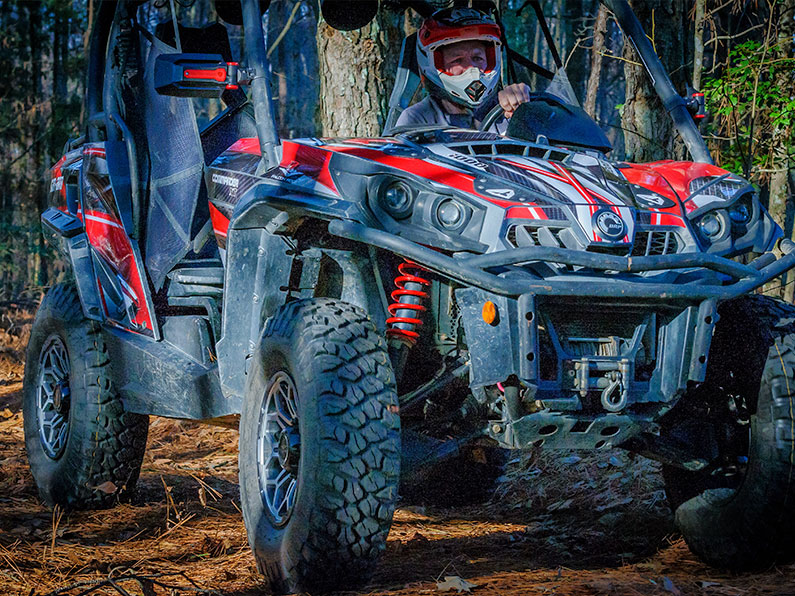
Steering column
In the simplest terms, the steering column connects your steering wheel to the steering mechanism of your UTV. No one is going to expect you to rebuild or swap out your steering column on your own any time soon, but there are a few telltale signs to keep an eye out for that could mean you need to take your machine in for a professional check:
- Rough steering operation
- Clicking or grinding sounds while turning
- Looseness or declining responsiveness when steering
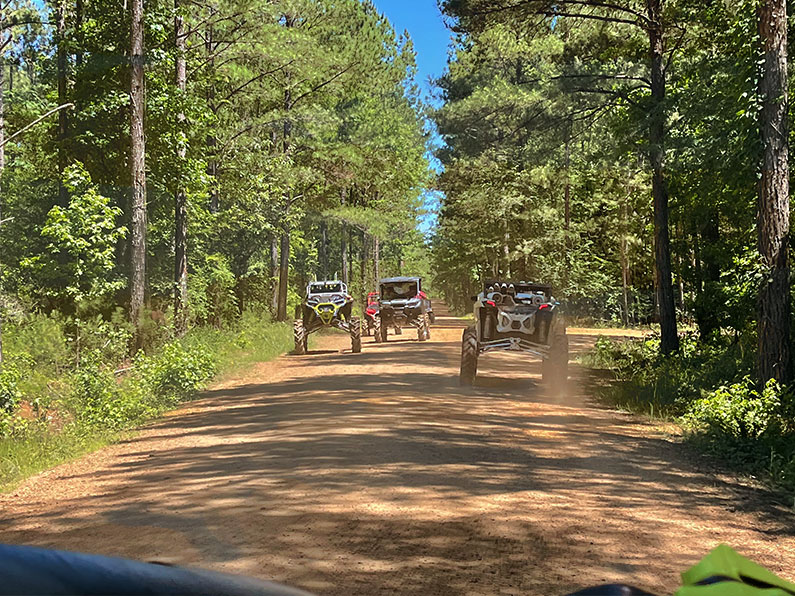
Acceleration and Braking controls
Much like the steering wheel, your UTV gas and brake pedals are very similar to what you use when driving a car, with the accelerator on the right and brake to its left. Also like your machine’s steering wheel, these pedals may be more or less sensitive than you are used to, so make sure to practice!
Gas pedal
Go, go, go! The gas pedal is what gets your UTV moving and you out on the adventure you want to be on. If you find your pedal’s size or sensitivity is off—or you want an extended pedal to reduce ankle or foot pain—the customization process is fairly simple.
Brake pedal
While the gas pedal might be more fun, the brake pedal is just as important. Be sure to test your brake pedal as part of your standard brake system check before every ride. As with the gas pedal, you can customize your brake pedal to your personal preference without too much trouble.
Parking brake
If you’re stopping on a hill to take in an awesome view or if you’re taking a break on uneven ground, it’s essential to engage your parking brake before you leave your machine. It may take some searching, but most often the parking brake will either be a floor pedal on the far left or a lever on the driver’s right near the gear shift.
Note: Some machines only have a parking gear and no parking brake. Consult your owner’s manual to confirm if your UTV has a parking brake.
Transmission controls
Most UTVs, similar to many cars, with a CVT (continuously variable transmission) will handle the shifting between gears automatically once you’re moving. But since UTVs are built to leave flat, paved roads behind, you will be using your transmission controls for more than just choosing between park, reverse, and drive.
Be sure to check your owner’s manual to confirm your side by side’s transmission type and the transmission controls available to you.
Gear shift
The most familiar UTV transmission control will be the gear shift that will operate like the one in your car. Make sure you check the gear positions in case they are different from what you usually drive–the last thing anyone wants is to rocket backward when you expect to drive forward.
High/Low range selector
Often located near the gear shift and is vital when offroading, especially depending on the type of driving you’re doing. If you are light on weight and looking to fly over open ground, high range will get you where you want to go. Loading up some extra buddies, transporting heavier cargo, or picking your way over tricky terrain? Low range is your ideal and will keep your drive belt happy. If you need even lower gears than your stock options, check out Side By Side Stuff’s portals.
Differential lock switch
Your differential lock switch can be the key to conquering even the toughest offroad challenges. When engaged, this switch will force the wheels on the same axle to spin at the same rate, providing better traction on difficult ground.
This switch is only for use in offroad situations. Do NOT engage your differential lock switch for road driving, unless you encounter rough weather conditions that require additional traction.
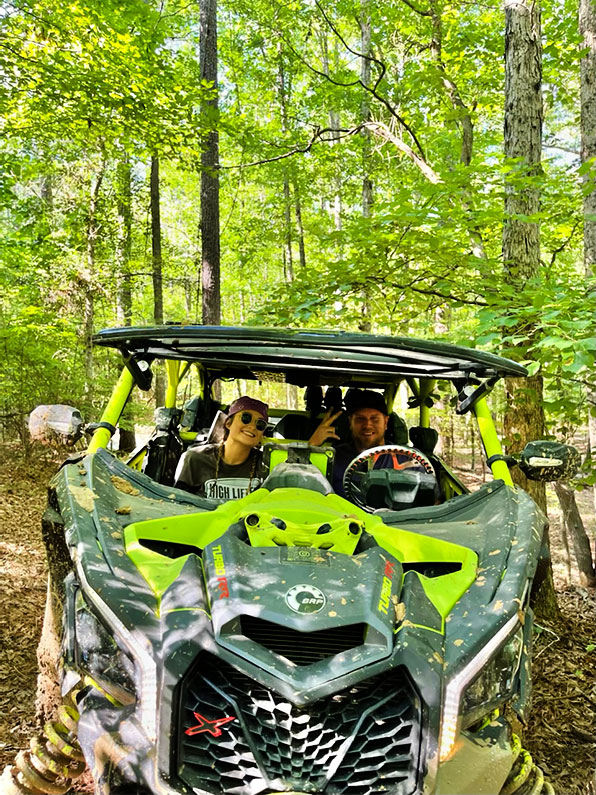
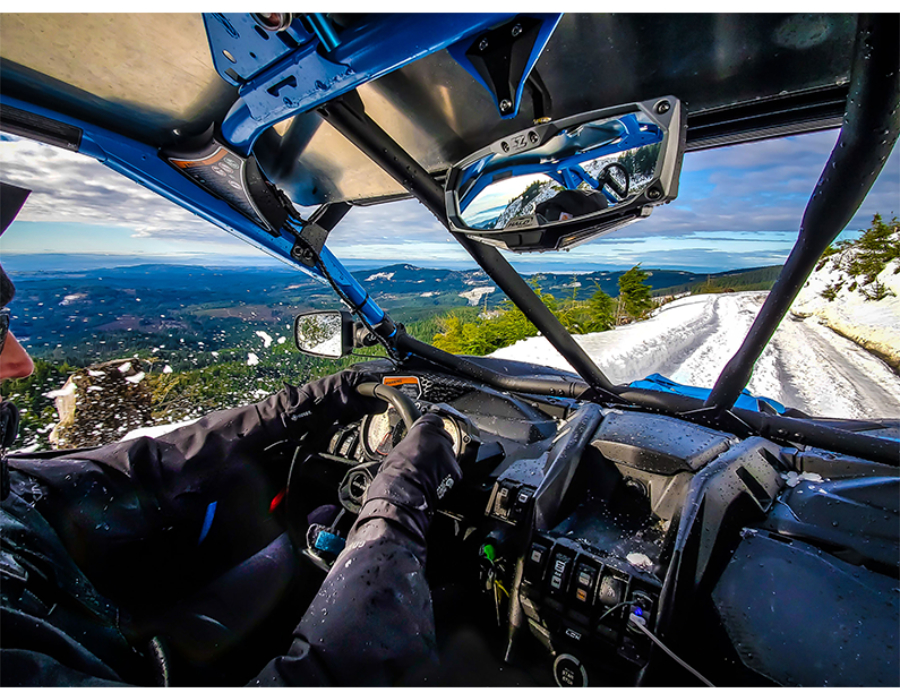
Electrical controls
Whether your UTV is kitted out with as many lights and speakers as it can handle or if you prefer a stripped-down, simple ride, it’s important to get comfortable with all the electrical controls of your machine. Often, these controls will be on the UTV’s dashboard. If your controls aren’t labeled or if you are unfamiliar with a symbol, first consult your owner’s manual and then take a look at these switches and dash switch mounts from Side By Side Stuff.
Ignition switch
Starting your side by side is step one when you’re ready to ride, and one most people handle intuitively. It is worthwhile to check if your ignition has any positions between off and on (a light/accessory position for example) and their function.
Headlight switch
During a daytime ride, your headlight switch may be the furthest thing from your mind. But when it gets dark, you don’t want to be scrambling to figure out how to get your headlights on to find your way home. The headlight switch is often located to the right of the steering wheel and should be checked to make sure the lights are working properly before leaving on a ride.

Safety controls
Many things we’ve already covered can be considered safety controls. Familiar components like the brake pedal, a headlight switch connected to working headlights, even your steering wheel are all pieces of the greater safety puzzle. However, there is one huge safety feature that you must be aware of when operating a UTV: the emergency stop button or kill switch.
Emergency stop button
If you need to immediately shut off your machine for any reason, don’t waste time reaching for the ignition. An emergency stop button, sometimes called a kill switch, will shut down your entire rig instantly and can help prevent major injury or even death.
Some stop buttons or switches can be attached to the driver and trigger automatically in case of a fall, while some are a standard push button that someone will need to press. Regardless, it is perhaps the most important piece of safety equipment to have. Familiarize yourself with its position and function to help ensure the safety of yourself and others.
Driving tips for beginners
Take it easy in the beginning. Find an open, safe space to practice the basics of driving your UTV and don’t hesitate to ask for help from more experienced riders or a Side By Side Stuff expert.
Reading your owner’s manual may seem like homework, but it is one of the most important things you can do when beginning your side by side adventure. There is a wealth of safety, performance, and specification information inside, so don’t be afraid to crack it open and do a little studying.
When you’re feeling confident and ready to tangle with some feisty terrain, don’t forget some basic safety precautions:
- Always wear the proper safety gear, including long pants, long sleeves and an approved helmet and goggles. Boots and a chest protector wouldn’t go wrong either
- Bring water and a first aid kit, no matter how short the ride
- Don’t skip the pre-ride inspection. Check fluids, tire pressure, the brake system (including pads), and body integrity
- Keep your ego in check. Don’t give in to the temptation to take risks and to tackle something harder or more dangerous than you can handle


We’re excited you’re here!
It can take some deep breaths to dive into the world of UTVS, so we are happy every time someone takes the plunge. If you have any questions about your side by side equipment or want to start putting together a list of aftermarket goodies to add to your ride, drop by the Side By Side Stuff site. Happy riding!

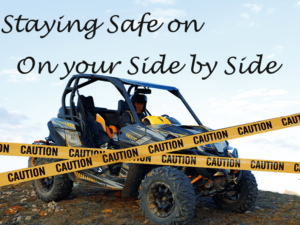
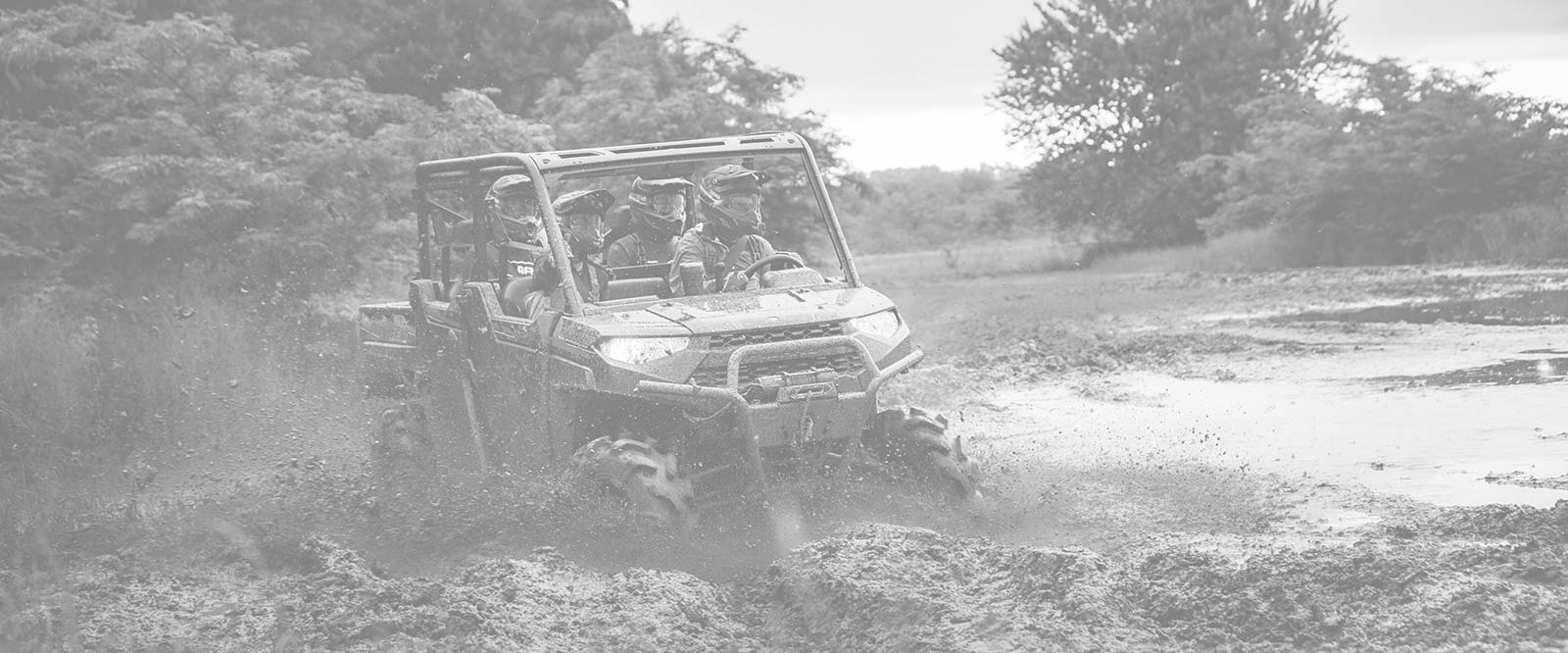
Comment section